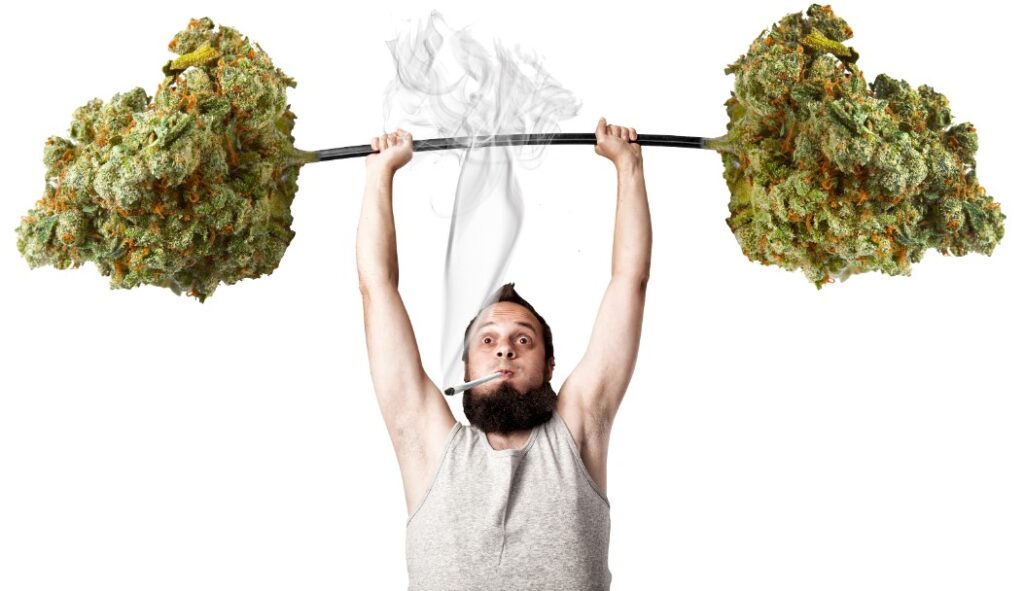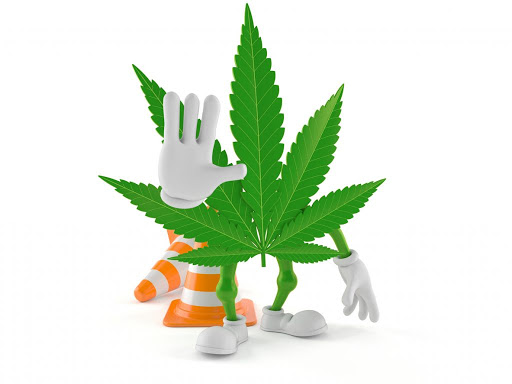Cannabis, also known as marijuana, has long been associated with a negative stigma and the stereotype of lazy, overweight stoners. However, since marijuana has become legal in Canada and various parts of the United States, athletes and fitness enthusiasts are starting to challenge these assumptions. They believe that cannabis can impact gym performance and provide various wellness benefits. But is there any truth to these claims? In this article, we will explore the potential benefits and risks of cannabis use in the context of gym performance.
Benefit 1: Reduce Inflammation
Benefit 1: Reduce Inflammation
In the realm of athletic pursuits, mitigating inflammation stands as a pivotal factor for optimizing both performance and recovery. A notable component of cannabis, cannabidiol (CBD), emerges as a potential ally in this quest. CBD, distinguished for its nonpsychoactive nature, is a cannabinoid derived from marijuana that exhibits promising anti-inflammatory properties.
Athletes navigating the rigors of physical exertion often turn to cannabis, specifically embracing topical products and tinctures infused with CBD. These formulations have gained popularity as remedies for managing pain and inflammation linked to muscle injuries, strains, or the recuperative phase following surgical interventions. Notably, the application of CBD-infused lotions or tinctures has been lauded for its efficacy in assuaging discomfort associated with both muscle and connective tissue issues.
Moreover, the scientific community is actively exploring the potential therapeutic role of CBD in addressing autoimmune conditions such as Crohn’s disease, lupus, and psoriasis. The anti-inflammatory attributes of CBD make it a subject of interest in research aimed at uncovering novel treatments for these challenging health conditions.
In summary, the integration of cannabis, particularly CBD, into the wellness routines of athletes reflects a strategic approach to reduce inflammation, promoting a more robust foundation for enhanced physical performance and expedited recovery. As ongoing research delves into the intricacies of CBD’s impact on inflammation and autoimmune conditions, athletes continue to explore the potential benefits of this cannabinoid in their pursuit of peak physical well-being.
Benefit 2: Ease Soreness and Pain
In addition to its anti-inflammatory properties, cannabis has demonstrated the ability to alleviate pain, offering athletes an alternative to traditional, potentially habit-forming opioids for effective pain management. The compounds found in cannabis, such as cannabidiol (CBD) and tetrahydrocannabinol (THC), play a role in modulating pain responses.
Athletes are increasingly turning to cannabis as a potential solution due to its multifaceted properties. Cannabis compounds have been identified as anti-inflammatory, stress-reducing, antioxidative, and pain-mediating, contributing to a comprehensive approach to pain relief.
Research and anecdotal evidence suggest that cannabis may effectively address both the physical sensations of pain and the broader impact on stress levels and overall well-being. The exploration of cannabis as a viable option for pain management aligns with a broader trend in seeking alternatives to conventional opioid-based treatments.
While further scientific investigation is warranted, the potential of cannabis, particularly its compounds like CBD and THC, offers athletes a nuanced and promising avenue for managing soreness and pain associated with physical exertion. As the landscape of pain management evolves, cannabis emerges as a subject of interest for its potential role in promoting holistic well-being among athletes.
Benefit 3: Treat Muscle Spasms
Muscle spasms can be a significant hurdle for athletes, and cannabis is being explored for its potential in addressing this challenge. While current research primarily delves into the use of cannabis for treating spasms related to conditions like multiple sclerosis and Parkinson’s, some rodent studies suggest that the anti-inflammatory properties of cannabis may contribute to muscle recovery and the reduction of spasms.
Despite promising indications in animal studies, the applicability of these findings to human athletes necessitates careful consideration. The absence of conclusive scientific evidence regarding the effectiveness of cannabis in humans underscores the importance of further research to ascertain its potential benefits for athletes without specific neurological disorders.
For athletes contemplating the use of cannabis to treat muscle spasms, a cautious approach is recommended, and consultation with medical professionals is advised. While initial insights are encouraging, a more thorough understanding of how cannabis may impact muscle spasms in athletes awaits additional scientific investigation and validation.
Benefit 4: Improve Sleep
Sleep is crucial for athletes’ overall fitness and performance, and cannabis may have a role to play in promoting better sleep. THC, the psychoactive compound in cannabis, is known to induce sleep, making it potentially beneficial for people with sleep apnea or those suffering from PTSD. On the other hand, CBD can help ease REM sleep disorder and daytime fatigue. Many athletes find that CBD reduces their stress levels, improves sleep quality, and duration.
While cannabis can help with sleep, it is important to note that it also comes with some caveats. One study found that young adults who took THC before bed experienced normal sleep but woke up feeling sleepier with impaired memory. Another study found that a blend of CBD and THC resulted in less stage-3 sleep but improved performance the following day on a number recall task. Cannabis can be an alternative to traditional sleep medications, which can be habit-forming and have side effects. However, individual responses to cannabis may vary, so it is essential to find the right dosage and strain for optimal sleep.
Benefit 5: Improve Mental Acuity
Challenging common perceptions, cannabis is being examined for its potential positive impact on cognitive function. Studies on older mice indicate that regular, low doses of tetrahydrocannabinol (THC) may contribute to the restoration of cognitive function. Fitness enthusiasts often express that cannabis helps them enter a mental “zone,” enhancing their focus and overall mental acuity during workouts. Notably, cannabis has demonstrated an ability to reduce anxiety and induce a meditative “flow state,” deemed vital for success in athletic endeavors.
It’s crucial to recognize that the mental benefits of cannabis can vary significantly among individuals. Striking the right balance and dosage becomes imperative in maximizing the potential advantages while mitigating risks. As cannabis’s impact on mental acuity continues to be explored, individuals, especially athletes, are advised to approach its use judiciously, considering both potential benefits and associated risks. The evolving landscape of cannabis research necessitates informed decision-making and ongoing exploration to optimize its application for mental enhancement in athletic pursuits.
Can Cannabis Impact Gym Performance Negatively?
Risk 1: Damage Lungs
While cannabis may offer potential benefits for athletic performance, it is essential to scrutinize the associated risks, particularly when it comes to smoking. Inhalation of marijuana smoke has been associated with potential structural damage to the lungs and, in some cases, a potential link to cancer. It’s important to note that the evidence, while indicating risks, may not be as robust as the evidence for cigarette smoking.
Concerns also extend to airborne contaminants and the lack of regulation in marijuana production. Research has highlighted potential hazards associated with marijuana smoke, with studies indicating that it may contain elevated levels of toxins, irritants, and carcinogens compared to tobacco smoke. Additionally, analyses of marijuana samples from dispensaries have identified high levels of contaminants, including pesticides.
In light of these concerns, athletes are advised to exercise caution when considering cannabis consumption methods, especially smoking, and explore alternative approaches to safeguard their lung health. Awareness of potential risks is crucial in making informed decisions about incorporating cannabis into athletic routines.
Risk 2: Impairment of Motor Skills
Marijuana is known to impair motor skills, impacting decision-making and motor coordination. Athletes should recognize that cannabis use can acutely hinder performance in activities requiring precision, such as driving or resistance exercises. While cannabis may enhance mental focus during workouts, responsible use of tetrahydrocannabinol (THC) is crucial, particularly avoiding immediate consumption before tasks demanding fast reaction times.
Individual responses to cannabis vary, emphasizing the importance of understanding one’s tolerance and response to THC. Athletes must prioritize safety, considering the potential effects on themselves and others when engaging in physical activities alongside cannabis use.
Risk 3: Increased Likelihood of Chronic Depression
Extended and heavy cannabis use has been associated with a heightened risk of developing psychiatric disorders, notably chronic depression. Prolonged exposure to cannabinoids may adversely affect mental health, potentially leading to persistent feelings of sadness, hopelessness, and a lack of interest in daily activities. The impact of chronic depression can extend beyond emotional well-being, influencing motivation, overall mood, and potentially compromising an individual’s physical performance.
It is crucial for athletes to be attentive to the potential risks of chronic depression associated with cannabis use. Regular monitoring of mental health and seeking professional guidance can help mitigate potential adverse effects. Athletes should approach cannabis consumption with a comprehensive understanding of the nuanced relationship between cannabis and mental health, recognizing the importance of balance and moderation in promoting overall well-being.
Risk 4: Increased Heart Attack Risk
Cannabis use is associated with an elevated likelihood of a heart attack within one hour of consumption. Exercising under the influence of cannabis can pose risks, especially for individuals with a history of heart problems. Athletes with heart conditions should seek medical advice before integrating cannabis into their fitness routine and may consider abstaining from its use altogether.
Individual responses to cannabis vary, necessitating athletes to assess their health conditions, tolerance, and potential risks before considering it as a performance aid. Consulting with medical professionals is imperative for a comprehensive understanding of the potential benefits and risks associated with cannabis use.
In conclusion, while cannabis holds potential benefits for athletes, such as reducing inflammation and enhancing mental acuity, it must be approached with caution. Consideration of potential risks, including lung damage, impaired motor skills, increased likelihood of chronic depression, and heart attack risk, is paramount. Prioritizing health and safety, athletes should consult medical professionals before incorporating cannabis into their fitness routines.
References
- Atakan, Z. (2012). Cannabis, a complex plant: Different compounds and different effects on individuals. Therapeutic Advances in Psychopharmacology, 2(6), 241–254. https://journals.sagepub.com/doi/10.1177/2045125312457586
- Russo, E. B. (2008). Cannabinoids in the management of difficult to treat pain. Therapeutics and Clinical Risk Management, 4(1), 245–259. https://www.dovepress.com/cannabinoids-in-the-management-of-difficult-to-treat-pain-peer-reviewed-fulltext-article-TCRM
- Huestis, M. A. (2007). Human cannabinoid pharmacokinetics. Chemistry & Biodiversity, 4(8), 1770–1804. https://onlinelibrary.wiley.com/doi/10.1002/cbdv.200790152
- Volkow, N. D., Baler, R. D., Compton, W. M., & Weiss, S. R. B. (2014). Adverse health effects of marijuana use. The New England Journal of Medicine, 370(23), 2219–2227. https://www.nejm.org/doi/10.1056/NEJMra1402309
- National Academies of Sciences, Engineering, and Medicine. (2017). The Health Effects of Cannabis and Cannabinoids: The Current State of Evidence and Recommendations for Research. The National Academies Press. https://nap.nationalacademies.org/catalog/24625/the-health-effects-of-cannabis-and-cannabinoids-the-current-state
- Rieder, S. A., Chauhan, A., Singh, U., Nagarkatti, M., & Nagarkatti, P. (2010). Cannabinoid-induced apoptosis in immune cells as a pathway to immunosuppression. Immunobiology, 215(8), 598–605 https://www.sciencedirect.com/science/article/abs/pii/S0171298509000709?via%3Dihub




